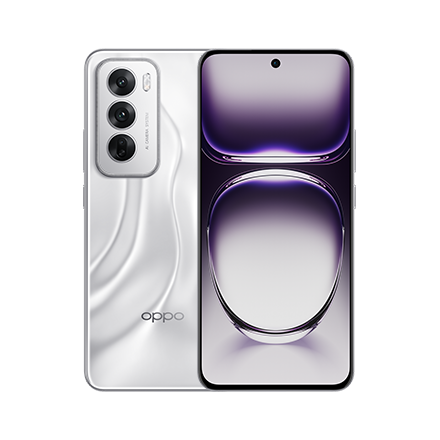{{dataCart.txtYourCart}} ({{dataList.cartItems.length}})
-
{{dataCart.txtStock}}
{{item.attachment.productDisplayName || item.displayName}}
{{productType(item.attachment.skuSelectOptions)}}
{{filterStock(item.salesStatus, item.stockStatus)}}
x{{item.qty}} {{dataList.symbol}}{{item.originPrice}} {{dataList.symbol}}{{item.nowPrice}}
-
{{list.displayName}}
{{filterStock(list.salesStatus, list.stockStatus)}}
x{{list.qty}} {{dataList.symbol}}{{list.originPrice}}-{{dataList.symbol}}{{list.nowPrice}}
-
{{item.evaluateOrder.productName}}
-{{dataList.symbol}}{{item.evaluateOrder.tradeInDiscount}}
-
Total {{dataList.symbol}}{{dataList.subtotalPrice}}
You are {{dataList.symbol}}{{dataList.freeLimit}} away from free shipping.
{{dataCart.txtYourCart}} (0)
{{dataCart.txtSign}}{{dataCart.txtEmpty1}}
{{dataCart.txtEmpty2}}{{dataCart.txtYourCart}} ({{dataList.cartItems.length}})
-
{{dataCart.txtStock}}
{{item.attachment.productDisplayName || item.displayName}}
{{productType(item.attachment.skuSelectOptions)}}
{{filterStock(item.salesStatus, item.stockStatus)}}
x{{item.qty}} {{dataList.symbol}}{{item.originPrice}} {{dataList.symbol}}{{item.nowPrice}}
-
{{list.displayName}}
{{filterStock(list.salesStatus, list.stockStatus)}}
x{{list.qty}} {{dataList.symbol}}{{list.originPrice}}-{{dataList.symbol}}{{list.nowPrice}}
-
{{item.evaluateOrder.productName}}
-{{dataList.symbol}}{{item.evaluateOrder.tradeInDiscount}}
-
Total {{dataList.symbol}}{{dataList.subtotalPrice}}
You are {{dataList.symbol}}{{dataList.freeLimit}} away from free shipping.
Find X3 Pro Microlens: The Detail within the Detail
 MSG (Left) and sugar (Right) , shot on Find X3 Pro
MSG (Left) and sugar (Right) , shot on Find X3 ProTraditional macro cameras magnify subjects by about two times, adding impact to close-up photography. Despite being fantastic creative additions to traditional smartphones, they fail to truly innovate or pioneer a new frontier of smartphone photography. OPPO sees things differently. By creating Microlens, the flagship OPPO Find X3 Pro can see worlds unseen, magnifying subjects by 30 times optically, and 60 times with hybrid magnification. The result goes far beyond macro photography, venturing into the microscopic.

Why Micro?
The appeal of the unknown and unseen can’t be overstated. Curiosity and a desire for knowledge have seen humankind explore the deepest oceans and venture into the vast depths of space. A better understanding of the microscopic is the next natural step in smartphone photography.
Colour, shape, size, scale, it all looks different at a minute level. A peek into the microscopic can teach us about the world we live in, nature we can too readily take for granted, and even the technology we use daily.
Once only available to scientists with microscopes, now, OPPO shines a light on a new dimension of smartphone photography by adding Microlens to Find X3 Pro. From world-class ultra-wide-angle capture, to 60x magnification microscopic photography, scale never needs to limit your creativity or curiosity.
A Microlens and a Colossal Challenge
Creating a microscopic camera lens with 60x magnification is no simple task. There are very real, functional challenges associated with any super macro module, let alone a microscopic one. High-magnification lenses, for example, are very sensitive to white specks and hair particles on the lens. These tiny elements can degrade the quality of a photo taken at high-magnification because they too are magnified.
In response to this challenge, OPPO has incorporated learnings from sapphire glass manufacturers, light guide manufacturers and camera manufacturers to make the world’s first Microlens on a smartphone possible. It has achieved this by treating it with a custom cleaning solution, making it over 10 times more resistant to minute specks and hair particles.

Crafting a Microlens camera even requires a different mounting method when manufacturing. On the structural level, OPPO installed the microscope module on the back cover of the phone, instead of directly mounting it on the motherboard.
To illuminate the microscopic, Find X3 Pro features a sapphire lens and ring light as exterior components of the Microlens camera. OPPO’s industrial design engineers had to work to maintain the structural and aesthetic integrity of the module, while still delivering an incredible micro-macro function.
The range of considerations in designing the Microlens module can’t be overstated. For example, the exterior needs to be black, to align with the rest of the device’s styling, however, a black ring light guide with increased opacity would impact its ability to function at an exceptionally close range at high magnification levels. By integrating a large lens and a hidden double-light guide, engineers overcame the potential barrier to aesthetic excellence and incredible photography.

Semi-transparent ink was used on the camera’s light guide, for a finish that looks black, but can still deliver on a photographic level. Creating the ink used for Find X3 Pro took over 10 revisions, each refining the level of opacity until perfection was achieved. More than 20 iterations of the ring’s design were created before OPPO’s exacting engineers were satisfied with the way the ring light guide matched Find X3 Pro’s space-age, award-winning design.
You may be wondering, why are a ring light and light guide so important for the Find X3 Pro’s Microlens? The focusing distance of the Microlens camera on Find X3 Pro is roughly 3mm. This incredibly low minimum focus distance shields a huge amount of ambient light, so the light guide and the fill light compensate for this when compared to traditional wide-angle cameras. When paired with its bespoke ring light, the Microlens can capture evenly lit, mesmerising images with accurate colour balance and a stunning perspective.

Find X3 Pro’s ring light doesn’t feature a conventional LED, as a standard flash module would be too large and bright, resulting in uneven exposure. By analysing 50 simulated photography scenarios, focusing on camera design and the selection of two side-emitting LED lights, OPPO carefully manipulated and matched the colour temperature range with the Microlens’s custom ring-light to achieve results a traditional LED simply couldn’t deliver.
And so, by seeing with a clarity of vision never before enjoyed on a smartphone, Find X3 Pro can explore a new, microscopic world — fabrics, skin, hair, plants, the tiniest insects — they all take on a new, vast form through Microlens. And when matched with a flagship camera array for best-in-class wide and ultra-wide photography, no device can deliver the imaging versatility, quality assurance and attention to detail made possible by Find X3 Pro.

Search articles
Quick links





















